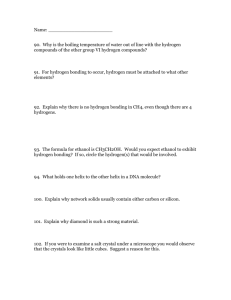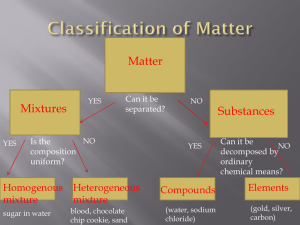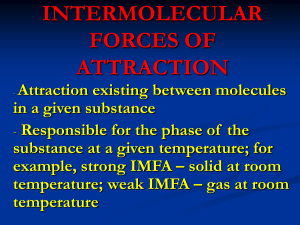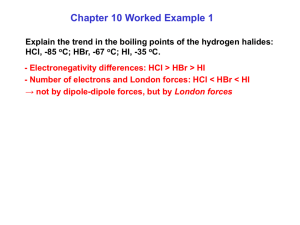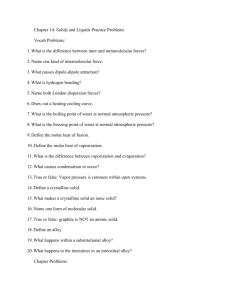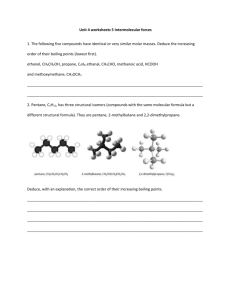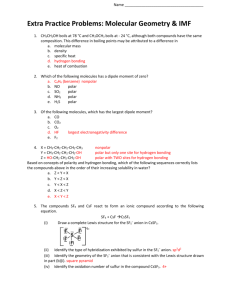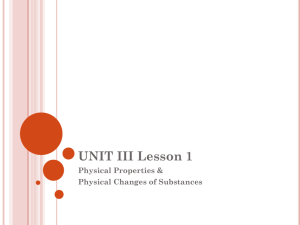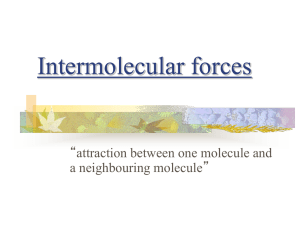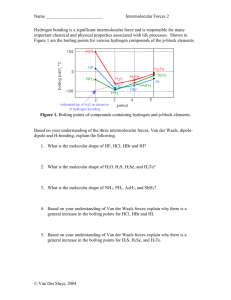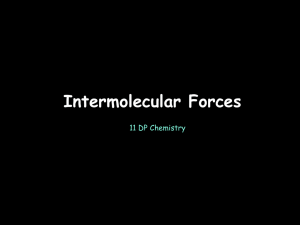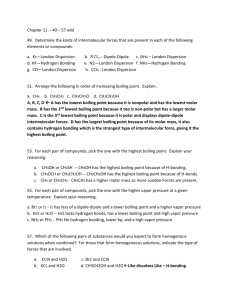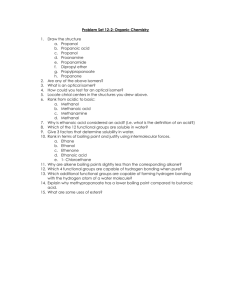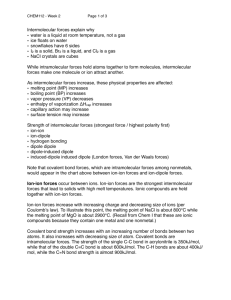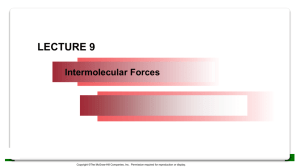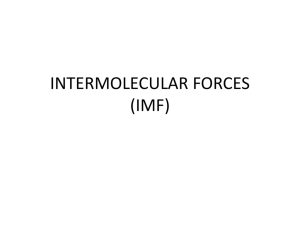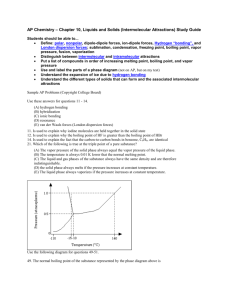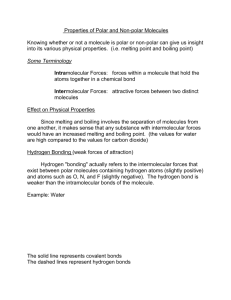Honors Chemistry Name WS 3.2 IMF Class _____ Date _____
advertisement
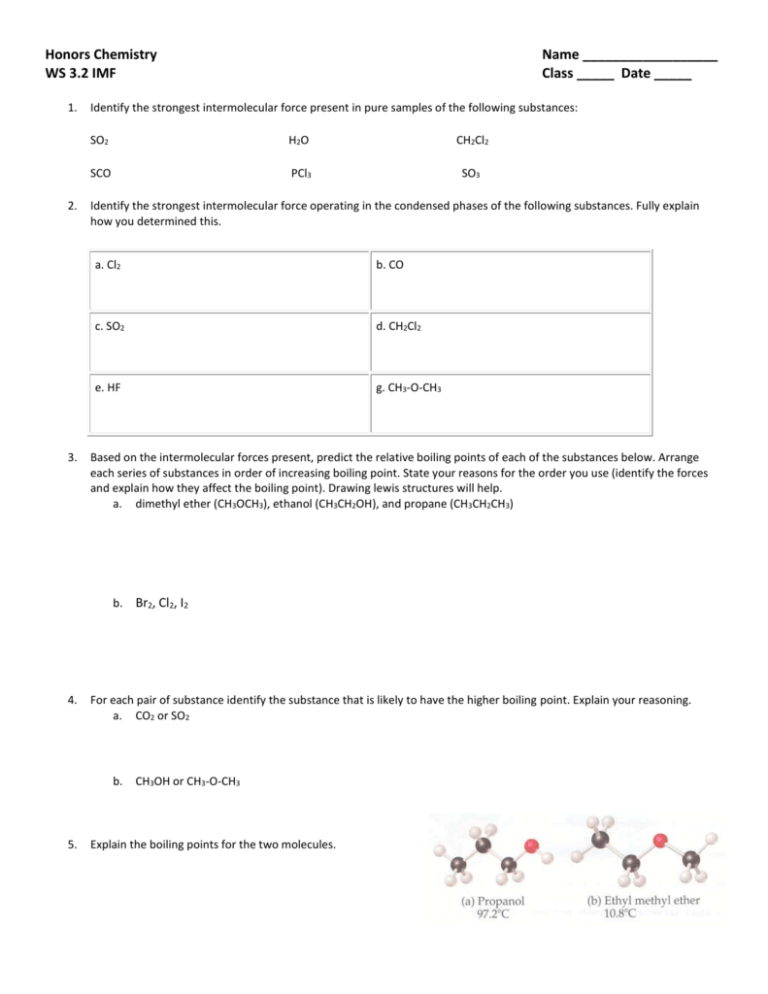
Honors Chemistry WS 3.2 IMF 1. 2. 3. Identify the strongest intermolecular force present in pure samples of the following substances: SO2 H2O CH2Cl2 SCO PCl3 SO3 Identify the strongest intermolecular force operating in the condensed phases of the following substances. Fully explain how you determined this. a. Cl2 b. CO c. SO2 d. CH2Cl2 e. HF g. CH3-O-CH3 Based on the intermolecular forces present, predict the relative boiling points of each of the substances below. Arrange each series of substances in order of increasing boiling point. State your reasons for the order you use (identify the forces and explain how they affect the boiling point). Drawing lewis structures will help. a. dimethyl ether (CH3OCH3), ethanol (CH3CH2OH), and propane (CH3CH2CH3) b. 4. Br2, Cl2, I2 For each pair of substance identify the substance that is likely to have the higher boiling point. Explain your reasoning. a. CO2 or SO2 b. 5. Name __________________ Class _____ Date _____ CH3OH or CH3-O-CH3 Explain the boiling points for the two molecules. a) 6. Rank the following by from lowest to highest anticipated boiling point: C2H4, CH4, Ne, H3COCH3. 7. Draw a correct representation of hydrogen bonding between the following molecules. Write “no hydrogen bonding” if hydrogen bonding cannot occur between the molecules. b) c) e) g) i) d) f) h) j) 8. Can the circled two atoms hydrogen bond? Why or why not? a) b) c) d) 9. True or false, if false, rewrite the sentence so it is true. a) Hydrogen bonding can occur within a molecule that has hydrogen bonded to nitrogen, oxygen, or fluorine. b) Hydrogen bonding can occur between the nucleus of an oxygen atom and a lone pair of a hydrogen atom c) Hydrogen bonding is a stronger force than an ionic bond 10. Draw the interactions between liquid water molecules and dissolved sodium chloride. (Will the positive or negative ends of water line up with the sodium ion – will the positive or negative ends of water line up with the chloride ion?) 11. Draw the interactions between CH3CH2CH2OH and ammonia (NH3). Recall that all carbons have 4 total bonds.


